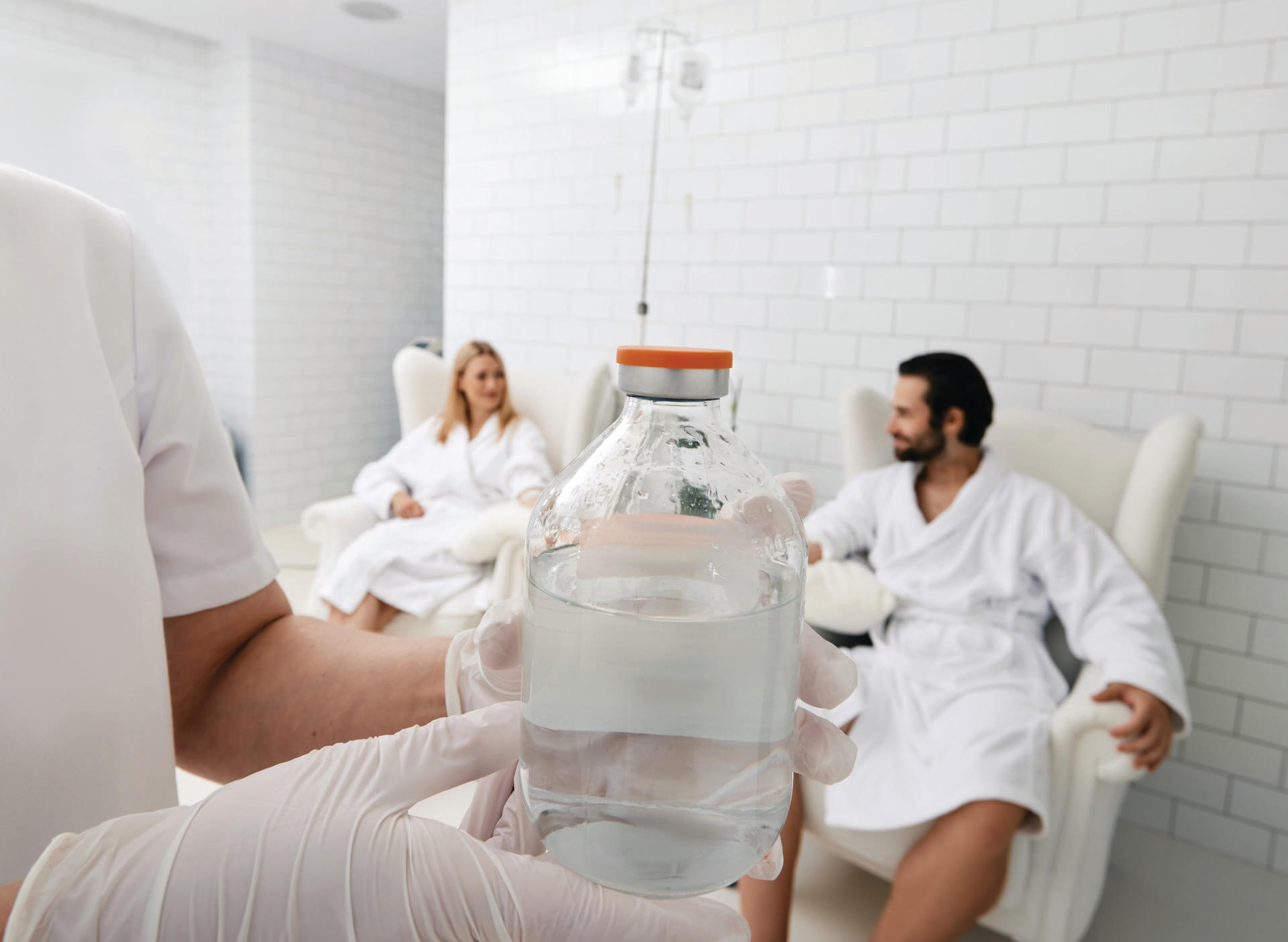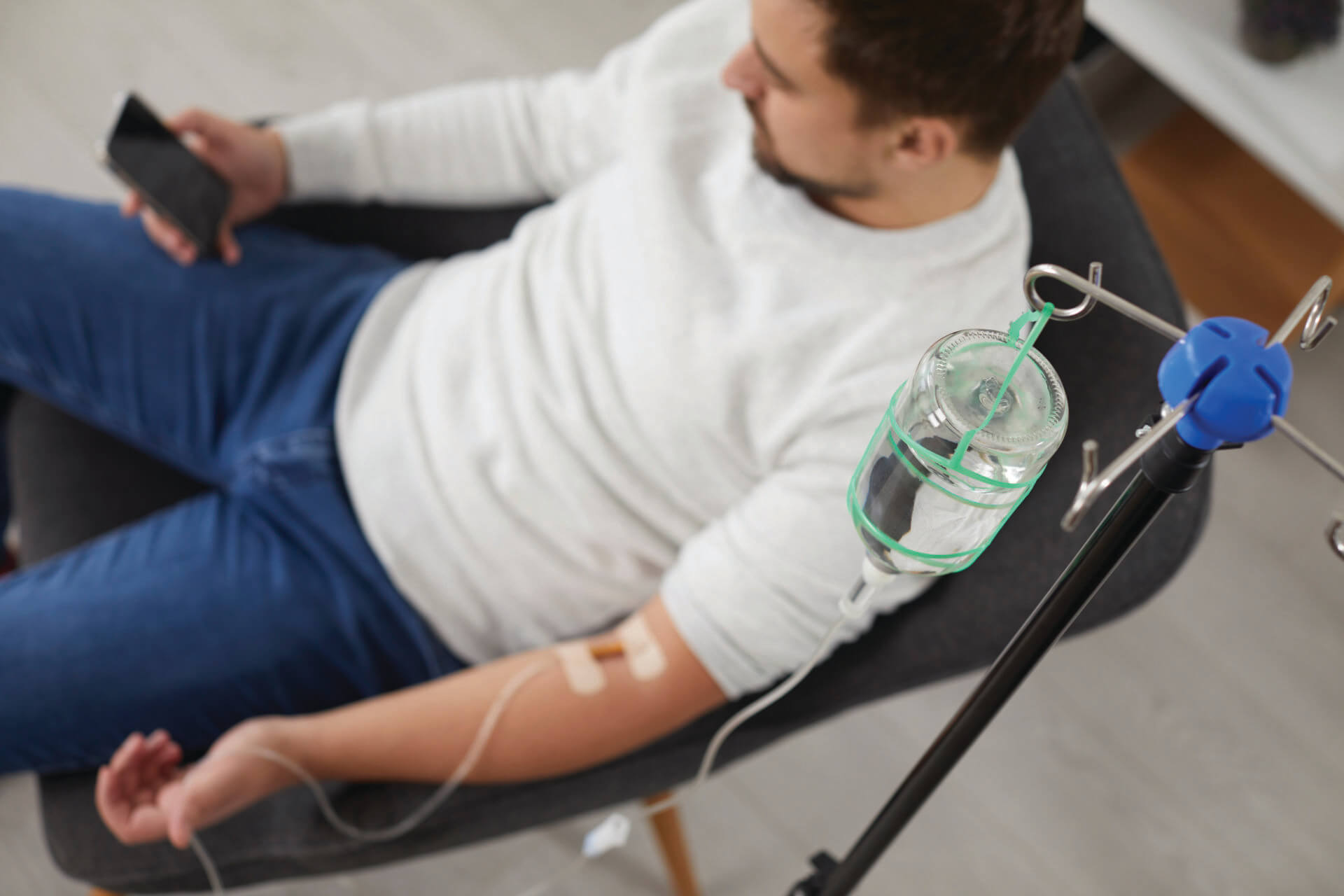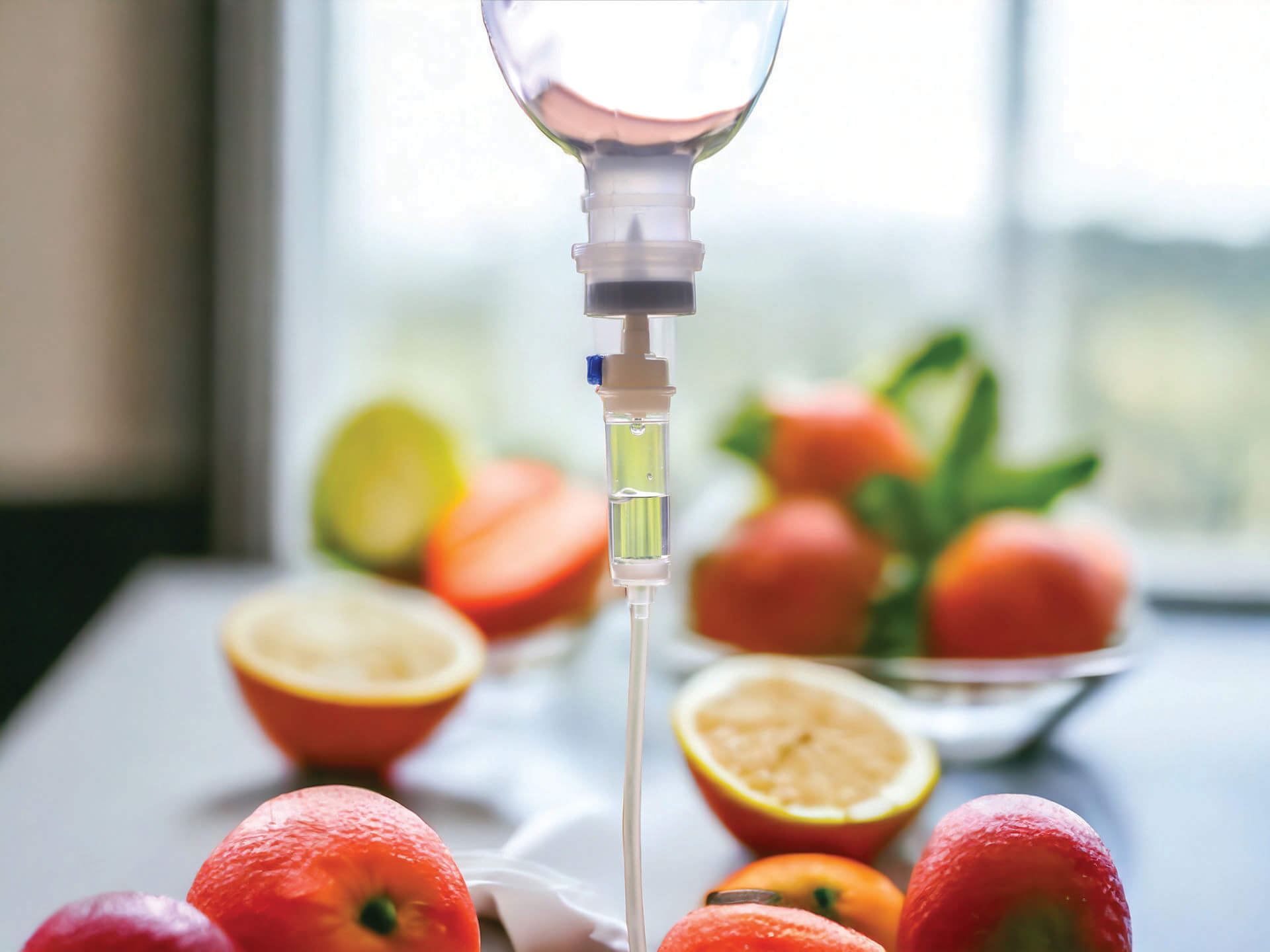Read The
Current Issue
It’s a Drip
Once only available in metropolitan areas, elective IV therapy, which might help with issues ranging from dehydration to vitamin deficiencies, has come to
Jackson Hole.
// By Lila Edythe

A 45-year-old single mom, Tibby Plasse describes herself as “someone who is always trying to figure out how to make my body feel better.” She adds: “As a perimenopausal woman, nutritional IVs keep me going completely normally and help with a load of things. I am definitely a believer, and it makes a lot of sense for me.”
Nutritional IV therapy is the administration of minerals and vitamins—or sometimes just a saline solution—directly into the bloodstream. IVs are most often put into the arm or hand. Nutritional IVs are generally not covered by insurance and are administered not at hospitals, but at medi-spas, “hydration bars,” “drip bars,” or even by a nurse who comes to your home. There is no scientific proof that these IVs do anything, but Plasse is not alone in believing that they contribute to her wellness.
Janice Fritsch, a highly motivated amateur athlete, says her every-other-week vitamin drips “have been a game changer.” Fritsch, who confesses, “I am not the nicest person to my body; I push it to do a lot,” started vitamin IV therapy in 2022 while training for a full-distance Iroman. “I read somewhere that you should be spending three times as much time recovering as training,” she says. “This message resonated with me, and I decided I was going to really commit to recovery.” This started with weekly saunas, cryotherapy, and red light therapy, but Fritsch quickly added IV vitamin treatments. She got through the intense training an Ironman requires and the race itself “feeling so much better than I thought I would,” she says. “I could not believe the energy I had.” Even though the Ironman is past, Fritsch continues to work out two or three times a day and remains committed to helping her body recover. She now has a sauna at home and does a vitamin drip every other week. “I like to be active, and I feel like it just helps. I feel so great the next day,” she says.
Medically necessary IV treatments—blood transfusions, antibiotics, fluids—were first used in hospital settings about a century ago and have been widely used in hospitals since the 1960s. The first vitamin IV therapy was developed between 40 and 50 years ago. A doctor at Baltimore’s Johns Hopkins University, John Myers, formulated a blend of B-vitamins, vitamin C, calcium, and magnesium that he thought could help chronic medical conditions such as asthma, fibromyalgia, fatigue, migraines, and more. While Myers had hundreds of patients who swore by his blend, which today is known as the Myers Blend or Myers Cocktail and is one of the most popular vitamin drips, vitamin IV therapy remained little known until the 2010s.
There is no research that shows proof that IV vitamin therapy can cure cancer, but it might reduce fatigue in those undergoing chemotherapy.
Early in that decade, doctors began offering drips purported to help with hangovers, weight loss, dehydration, and aging skin. A 2014 New York Times article mentions IV hydration services in Las Vegas, Los Angeles, Scottsdale, New York, the Hamptons, San Francisco, Los Angeles, and Chicago. In 2018, the Federal Trade Commission charged several IV therapy bars with making deceptive promises about their IV blends’ abilities to treat cancer, congestive heart failure, and multiple sclerosis, but by the end of the decade, celebrities like Katy Perry, Rita Ora, and Gwyneth Paltrow were very public about their use of vitamin IV drips.
The first nonmedical IV therapies available in Jackson Hole arrived about a decade ago. Today, there are five IV services, some of which do house calls while others have a storefront. “When I first started Housecall Hydration, I thought that there was a lot of partying that happens here and that I’d be getting clients wanting help with hangovers,” says nurse Lindsay Emerson, who founded the business about eight years ago. “But it is a lot more people looking for help with wellness—they have a stomach bug, or are from lower elevations and are struggling to acclimate to our elevation.”

As popular as IV vitamin therapies have become, they are not FDA-approved, and there are no clinically validated studies confirming that they have any real benefits. “I understand sometimes you do need hydration in an urgent situation. If you’re used to sea level, you will get dehydrated here faster,” says naturopathic physician Monique Lai, ND. “We’re fortunate to have good [IV clinics], which is great, but my belief is that people should get nutrients from their food and water by drinking it and only use elective IVs in extreme situations. The body works in such a beautiful, perfect way, why puncture it unnecessarily?”
Still, Lai has patients that do IV therapy regularly. Some of these are elderly or ill and cannot get vitamins through food or even supplements; others “just feel like it helps them,” she says.
About a decade ago, Emerson, the nurse who founded Housecall Hydration, was a member of the U.S. Snowboard Team. During the competitive season, she got sick, which led to her being severely dehydrated. “I ended up having to get an IV for dehydration,” she says. “It helped me bounce back so quickly. It really opened my eyes.” Emerson went on to nursing school and, while in school, worked at a hospital where her boss owned and ran an IV clinic in Park City. After Emerson got her nursing degree, her former boss encouraged her to open an IV clinic in Jackson Hole. Housecall Hydration was born. (Emerson and her brother also bought her former boss’s Park City clinic, Vitamin Bar, and are in the process of opening outposts across the country; a Chicago Vitamin Bar opened this past spring.)
Before finding vitamin IVs, Plasse says she was taking more than 60 pills a day to balance her body. “The entire counter was filled with supplements. They controlled my life,” she says. “I thought nutritional IVs might be a better way to get what I needed.” In the years since she began getting drips, Plasse has gone even further and uses the regular blood tests she gets to work with an IV clinic in Idaho Falls to create custom blends for her specific deficiencies.
Iron-woman Fritsch says she knows that there are no studies saying that IV vitamins do anything. “But I am less focused on the data and more on whether or not I think I’m getting a benefit, and I think I am,” she says.
Risks of IV vitamin therapy
Minor side effects can include pain, swelling, and scarring at the IV site. Serious side effects include infection, clotting, and inflammation. People with kidney or heart disease or multiple allergies should not receive IVs unless prescribed by their doctor, and people on medications should be extremely cautious about the potential of drug interactions. Pregnant or breastfeeding patients should consult with their doctor before getting any vitamin IVs. JH





